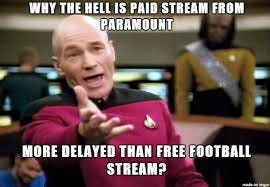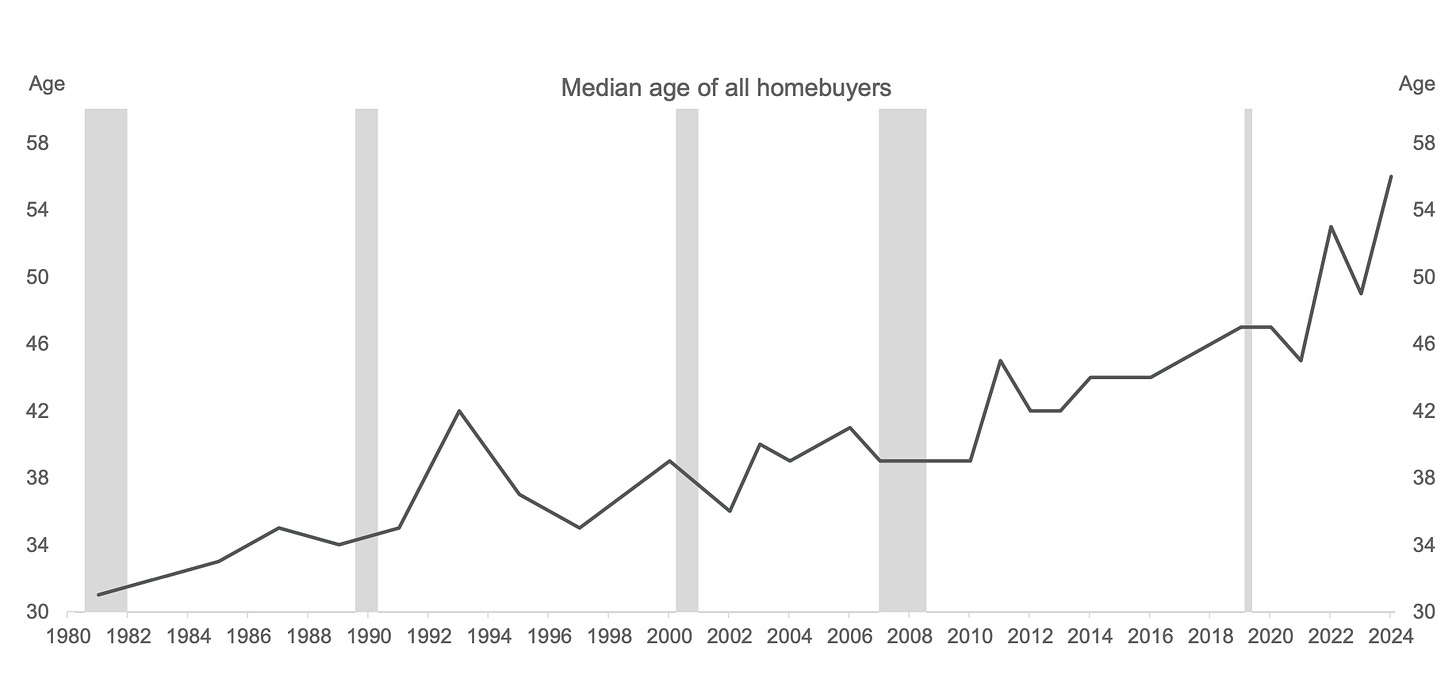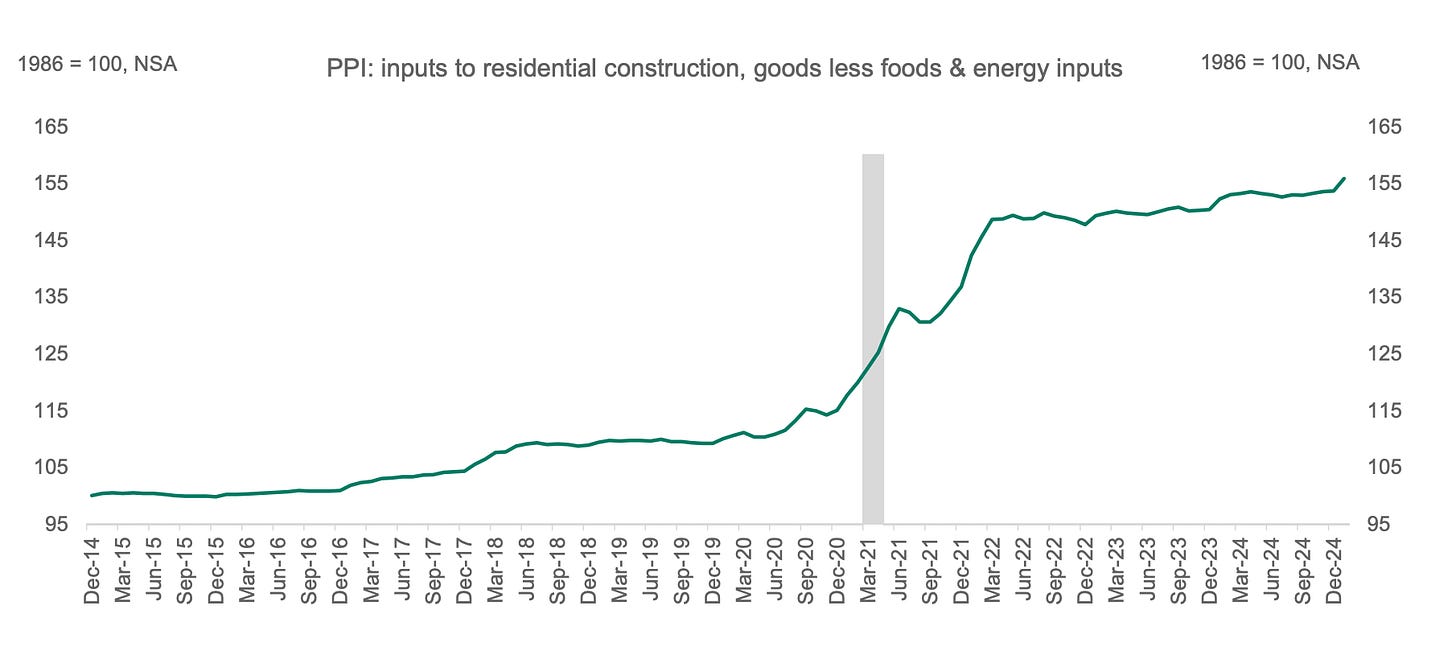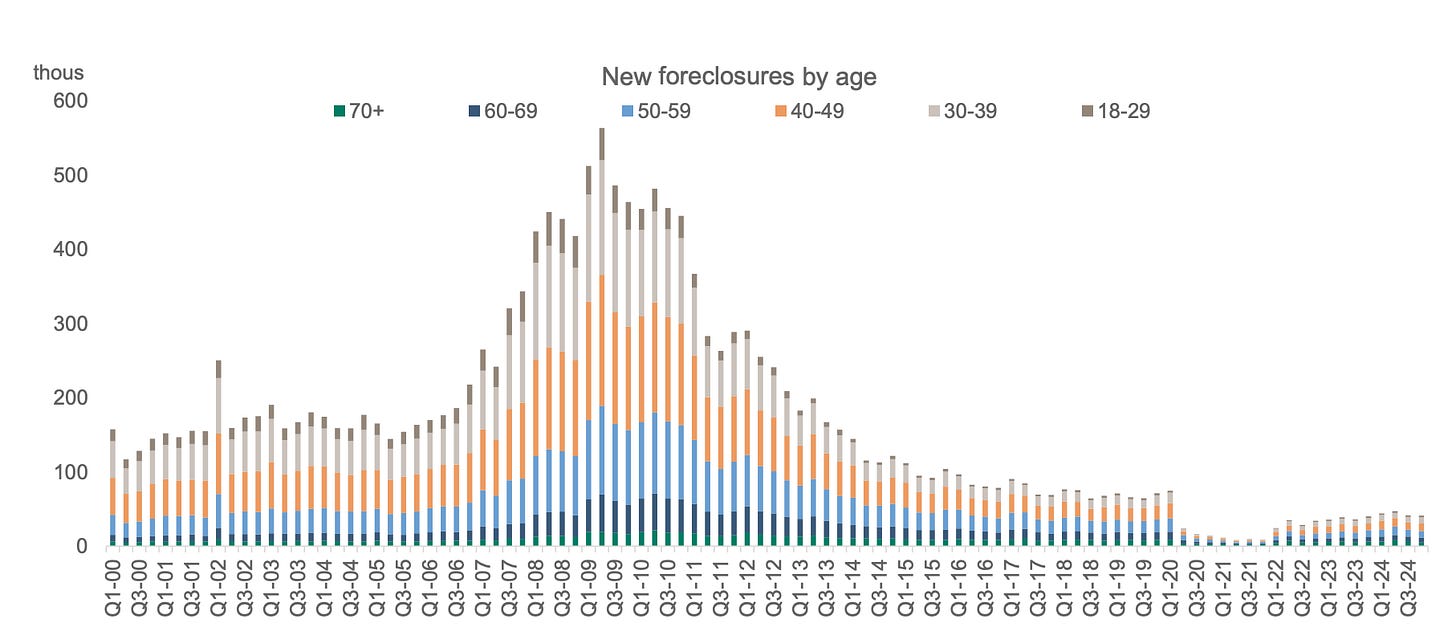The Perfect Housing Storm
The traditional housing market is completely off the rails.
The average monthly mortgage payment for a new home has ballooned to ~$3,000.
Meanwhile, the average lot rent in our beloved MHP industry is somewhere between $400-$600 depending on the region.
Even if you add the cost of a mobile home payment (which most park residents don’t have as they own their homes outright), the all in payment in the low $1K range is a hell of a bargain.
Because the problem with a $3K home payment is….
The average American only makes $4.9K / month.
Tiny disconnect there. Pretty hard to live when housing costs are 50%+ of your income. Doesn’t leave much for I don't know, food, clothing and everyone’s 20+ streaming subscriptions.
Side note: I’m pretty sure I’m still paying for shitty Paramount+ so I could watch that one random Chiefs vs. 49ers game 2 years ago.
So housing ain’t cheap. Which is probably why the median age of all homebuyers today is…wait for it…56!
Good lord! 56 is just a tad up from the average 31 year old homebuyer in 1981.
This explains some of the anger and pent up frustration we’ve seen from younger generations the last couple years.
Construction Inflation
At least construction costs are down. Actually, nope those are really high too.
While everyone's freaking out about interest rates, construction costs have quietly destroyed affordability from the other direction.
The last few years have been BRUTAL for anyone trying to develop. Developers were unlucky casualties of the government’s covid era money printing, which led to inflation, which led to giant interest rate spikes.
It’s been the perfect storm of huge construction & labor increases + ballooning financing costs.
Housing Supply
You’ve probably heard the following stat: America is short about 2-4 million homes depending on which economist you ask. TWO to FOUR MILLION. If you’ve ever been involved in a new build, you know it takes Herculean effort to finish construction.
In 1970 it took ~4 months to build a home, today it takes 8 months on average and 100 years in California.
I have no idea how we close this demand vs. supply gap anytime soon, especially in a tight labor market.
How did we get here? Well, after the 2008 financial crisis, builders collectively decided, "Nah, we're good on building houses for a while." Instead, they got really good at optioning land which dramatically reduced their carrying costs (vs. carrying land on their balance sheet).
Consequently, they don’t feel as much pressure to build regardless of economic conditions. They can just flex operations up and down to meet demand.
Homebuilders have gone from horribly cyclical companies to highly profitable businesses. Here is the stock chart from homebuilder NVR, whose land option business model is now the industry standard.
Homebuilders have been revamped to ride out downturns at low volumes. This is a structural change to the housing market and is further constraining supply.
Business has been bad, yet homebuilders still made good money this cycle.
This is unlike realtors who have “stared into the abyss” the last few years waiting for sales to rebound.
No Foreclosures This Time
The upside to low housing supply? No housing crash.
During the 2008 housing crisis, foreclosures flooded the market with inventory, and prices cratered.
Not this time, friends.
Foreclosure rates are low across all age groups.
Unlike 2008, banks puckered up this credit cycle and only lent money to flawless borrowers with big down-payments.
Furthermore, most homeowners have large equity positions in their homes, and most still have jobs. Nobody is walking away from their mortgage or moving so they can trade their sub 3% mortgage for 7%.
Which is why the percentage share of new homes for sale (vs. existing homes) is at record all time high.
What Does All This Mean For MHP?
This is quite the setup for manufactured housing.
Constrained housing supply and no forthcoming wave of cheap foreclosures means quality run MHPs are desperately needed.
While demand for affordable housing has been high for decades it’s getting worse. The affordability gap has never been wider. New supply will eventually increase but at prices unattainable for most Americans given construction costs remain sky-high.
I assume the affordability gap will eventually narrow, but it appears we've got a long runway ahead of us. Time to make the most of it.
Happy Trails,
MHP Weekly











